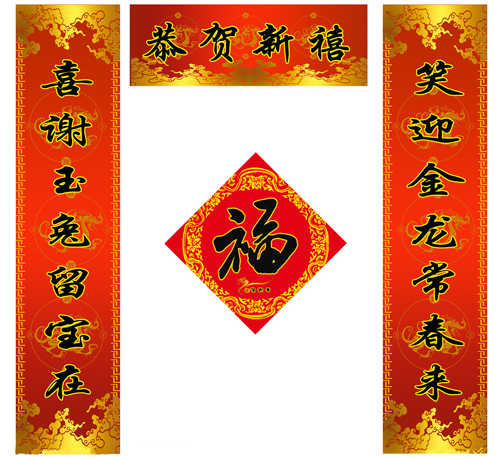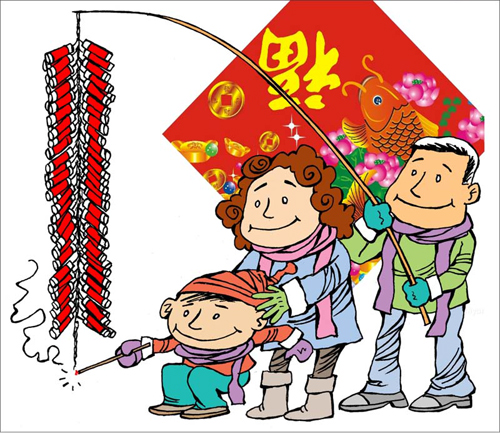What Are The Customs Of Chinese new Year?
By Susan Ye
2013-11-30 00:00:00
As the 2014 Chinese Lunar New Year quickly approaches, we all wish for prosperity in the coming Year of the Horse. Many Chinese remember receiving the little red envelops for giving holiday greetings. Chinese New Year brings the holiday spirit to the hearts of everyone. The Spring Festival traditions of other countries will have different traditions, but also similarities with the customs of the Chinese New Year.
Spring Festival couplet
The Spring Festival couplet, also called gate, spring up, couplet, paired "peach wood charms", is traditonally hung on the gate or entrance of homes during the Chinese New Year to ward against evil and express the great desires of the household. In both urban and rural areas, households display the bright red couplets on each side of the entrance creating a festive atmosphere. This custom originated during the Song dynasty and continued through the Ming and Qing dyanasties. The couplets have evolved both ideologically and artistically to the point that couplets by Liang Zhangju are organized by serial number as to origin and characteristics.

There are varieties of couplets depending on their application and can be divided into sections or boxes. This can include a horizontal scroll across the top and a "Heart" sticker or box on the top center of the door or gate along with the vertical scrolls left and right of the door.
Setting off firecrackers
Chinese folk like to celebrate the dawn of a New Year by setting off firecrackers. Firecrackers, also know as "explosives"originated in China over 2,000 years ago. The have evolved into colorful displays adding to the festive atmosphere of festivals, weddings, and celebrations. Today, Liuyang, Hunan, Guangdong Foshan Dong Yao, Yichun and Pingxiang in Jiangxi, and Zhejiang Wenzhou region are famous producers of high quality fireworks exported throughout the world.

Because many cities have banned fireworks for saftey and envionmental reason, this practice is on the decline.
A happy new year
Children love to offer New Year's greetings because they will often receive a gift or bonus in return. People will rise early on New Year's Day, dress in their nicest clothes, and go visit with friends and family, wishing all good luck in the coming year. There are a variety of ways to greet the new year. The head of a household may pay visits to other households of the same family, or invite colleagues to share greetings or congratulate each other. Some higher level elites or officials choose to send greeting cardsto save time.
We have finished readingsome of China's Spring Festival traditions.
Now let's take a look at the traditons of some other countries that have Spring Festival traditions.
Japan Customs of Chinese new year
Spring Festival used to be Japan's biggest festival. Every household was decorated with cypress and each family would gather round the fire. Temples rang 108 bells at midnight for a happy new year.
In Japan, at New Year, Japanese offer each other presents in "gift bags". These so-called gift bags are filled with presents that can be packed in a bag. Ranging in price from one thousand to tens of thousands of yen, they can include cosmetics, sundry goods, electrical appliances, clothing and more. Gift bags are an extemely popular traditions because they can have great value. Of course only a few can offer or receive extremely valuable gift bags, but the excitement is always there.
Korea Customs of Chinese new year
Derived from the traditional Chinese New Year, the Korean Spring Festival is based on ancestor worship and the idea of filial piety and ancestral prayers. The ancient traditions include makeup and painting, Fu wire strainer, luminous ghosts and legends. Similar to the Chinese, Koreans celebrate by eating pudding, "rice cake soup", and other traditional Chinese foods.
Mongolia customs of Chinese new year
Spring Festival in Mongolia is in "tsagaan-El" meaning "white moon" or white month". It lags ten days behind the Chinese New Year. Mongolian herders celebrate the festival with exciting camel racing. Families cook thousands of buns filled with mutton, vegetables and oil. These steaming buns are a great favorite in Mongolia.





